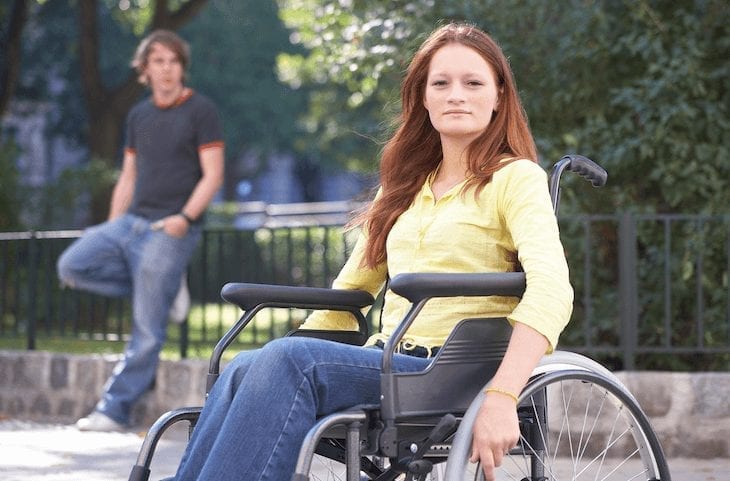Posture is often overlooked as a health concern, but a person’s posture has a direct effect on his or her breathing, organ function, and muscle integrity. With the majority of American adults confined to desk and chair for 40 hours of the week, attention to posture is crucial for optimum health. In Chinese medicine, correct posture is considered necessary for the proper flow of qi (the life force that traverses each living thing). TCM practitioners believe that good posture provides for not only the proper flow of qi, but of blood as well (leading to better brain and organ performance).
Poor posture is related to several TCM problems (such as back pain and other forms of musculoskeletal imbalance), and is sometimes believed to cause them. Consequently, practicing good posture can enhance a TCM treatment (such as acupuncture), while poor posture can inhibit results. Due to the active lifestyle common in their patients, ancient Chinese medical practitioners did not have to deal with patients’ poor posture nearly as often as practitioners do today. Similarly, Liver Qi Stagnation was also not as common a problem in ancient China as it is today; it is believed to be closely related to posture. Liver Qi Stagnation refers to a pattern of disharmony in a person that is characterized by pain in the chest, the abdomen, the head, or along the Liver channel. Also associated with this disharmony are feelings of stress, agitation, or anxiety. Liver Qi Stagnation directly coincides with posture problems, and helping the latter can greatly improve the Liver channel – alleviating muscle pain as well as mental tension.
Acupuncture is a great place to start working on one’s posture. A practitioner can discover which muscles or channels are most affected by an individual’s physical stance, and can thus recommend which areas are in greatest need of improvement. Some patients have a slightly raised left or right side of the body, others tuck in the pelvis (as all small children do), or thrust out the chest too much, while still others primarily have problems in the neck/ upper back region, where slouching is the most common problem. Each imbalance in a person’s alignment will have a different posture reform remedy. And each posture reform remedy can be enhanced with acupuncture or a high impact massage, such as the Asian Tui Na massage technique.
Identifying and Addressing Posture Imbalances
Being aware of one’s personal posture imbalances is necessary to attempt self- correction. Once it is apparent what a person’s problem areas are, individuals can try everyday exercises and minor corrective changes in their daily routine to gradually improve their carriage. When sitting at a desk in an office chair, pressure on the back should be equally distributed. This means leaning to one side, crossing the legs frequently, or slumping the head and neck forward or down should be avoided. Keep both feet on the floor as often as possible instead of putting the weight of one leg over the other. It can help to imagine a string traveling up the spine through the neck, shoulders, and head that is pulled taught above the body – essentially causing the ears, hips, and shoulders to form one vertical line. Humans need movement for health – even good sitting posture can be uncomfortable if held for too long. Every half hour or 45 minutes, try getting up and walking around the office for a minute or drinking a cup of water. If an employer questions this, cite the recent study conducted by Cornell in which 21 workers were reminded to take breaks over the course of ten weeks at their computer-based jobs. Their productivity levels actually rose thanks to these breathers.
If you think a career in holistic medicine is something you would like to pursue, contact us and speak to an admissions representative to get started on your new journey!
Massage and Oriental Techniques for Posture Improvement
Muscle tension is one of the leading causes of chronic back pain and poor posture. This is where massage can provide a powerful corrective tool. Deep tissue massage, such as Tui Na (which kneads muscles and focuses on the meridians, or energy channels, of the body), or Asian Body Therapy sessions (especially if applied consistently) will loosen muscles so that certain postures and poses are no longer necessary to alleviate pain. When muscles are particularly strained, the body compensates for this fatigue by employing surrounding muscles in an often-unnatural way (such as upper shoulder strain being neutralized by slouching). Going to the source of poor posture is key to making the permanent changes required. Other Oriental techniques that can help, involve meditation and relaxation as well as strengthening exercise. These include yoga, Tai Chi, and Qi Gong, each of which will help to strengthen and relax the back and shoulder muscles that will gently correct one’s alignment.
Sources:
Gokhale, Esther. “The Posture-Liver Stagnation Connection.” Qi: The Journal of Traditional Estern Health and Fitness. Pages 29-25. 2009.
Lang, Susan. “Study: Prompts for Computer Breaks Raise Productivity.” Cornell Chronicle. 1999. http://www.news.cornell.edu/Chronicle/99/9.30.99/microbreaks.html
Schubbe, John. “Guidelines to Improve Posture.” Ergonomics: Spine Health. 2004http://www.spine-health.com/wellness/ergonomics/guidelines-improve-posture
Featured Posts:

